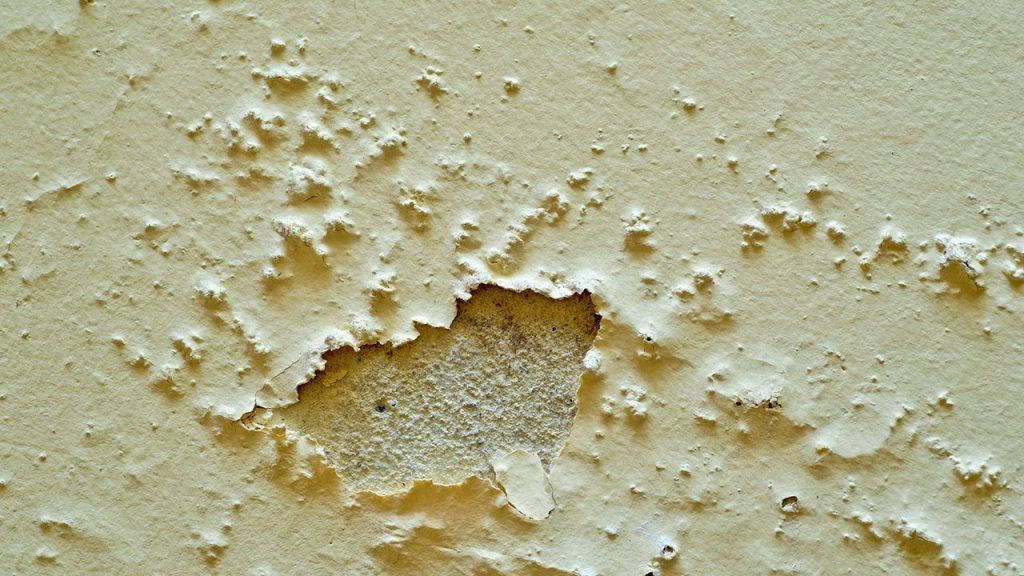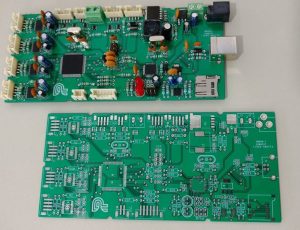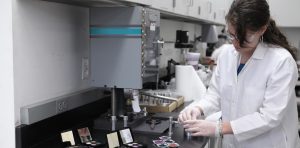In industrial processes where coatings, paints, or varnishes are applied, the quality of the final finish is a critical factor. Defects such as bubbles, peeling, irregularities, or surface stains can lead to material waste, production delays, and additional costs. One of the most common causes of these problems is ambient humidity. Air with a high moisture concentration can affect paint and coating adhesion, interfere with uniform drying, and cause imperfections to appear. The H2OTEK RD-158L/D-550 portable industrial dehumidifier presents an efficient solution for controlling humidity and improving finish quality in various industrial applications.
Importance of Humidity Control in Coating Processes
The relative humidity of the environment directly affects how coating materials behave on a surface. When humidity is high:
- Drying time is extended, increasing the likelihood that dust, particles, or contaminants will adhere to the surface.
- Bubbles or blisters may form in the paint due to water condensation trapped between the paint layer and the surface.
- There is a risk of peeling or detachment, especially on metal or wood surfaces, where humidity can interfere with the adhesion of paint or varnish.
- Finishes may become uneven, with glossy or dull areas, compromising visual uniformity and durability.
For any industry aiming for a professional finish—whether automotive, metalworking, construction, or furniture—maintaining controlled humidity is essential.
H2OTEK RD-158L/D-550 Portable Industrial Dehumidifier: Key Features
The H2OTEK RD-158L/D-550 is a portable dehumidifier designed for industrial environments, capable of removing up to 158 liters of moisture per day under standard conditions. Its technical features make it ideal for use in workshops, production lines, and warehouses:
- Portability: Easy to move to different production areas as needed.
- Moisture extraction capacity: Maintains optimal relative humidity levels, especially in humid environments or tropical climates.
- Continuous and reliable operation: Equipped with an industrial refrigeration system that ensures consistent efficiency.
- Compatibility with ventilation and environmental control systems: Can be integrated with air extractors, paint booths, and climate control systems to optimize coating drying.
Improving Finish Uniformity
By reducing ambient relative humidity, the H2OTEK RD-158L/D-550 dehumidifier ensures that coatings dry uniformly. This provides several advantages:
- Even drying: By removing excess moisture, paint or varnish dries evenly, preventing differences in gloss or texture.
- Bubble prevention: Water condensation trapped on the surface or between paint layers is a major cause of bubbles. Controlling humidity minimizes this risk.
- Optimal adhesion: Paint adheres properly to the surface, preventing premature peeling or layer detachment.
- Reduced rework: With a more uniform finish from the first application, the need for sanding, repainting, or corrections is reduced, saving time and resources.
Reduction of Defects Such as Bubbles or Peeling
In industry, surface defects not only affect aesthetics but can also compromise product functionality. For example:
- On painted metal parts, bubbles can allow oxidation beneath the paint.
- On furniture or wooden surfaces, peeling can expose delicate fibers, causing irreversible damage.
The H2OTEK RD-158L/D-550 helps mitigate these issues by maintaining the environment within controlled parameters. By removing excess humidity, it prevents water from becoming trapped in coating layers and ensures a more stable and durable curing process.
Practical Industrial Applications
The H2OTEK RD-158L/D-550 portable industrial dehumidifier has multiple applications in industrial environments where improving finish quality is essential:
- Industrial paint booths: Maintaining a dry environment ensures proper paint adhesion and reduces the risk of bubbles.
- Wood varnishing processes: Excess humidity can cause varnish to peel or form blisters; a dehumidifier prevents these issues.
- Automotive maintenance workshops: During vehicle repainting, humidity control improves finish uniformity and gloss.
- Manufacturing of electronic and plastic equipment: Some components require uniform coatings, and humidity can affect the adhesion of protective layers.
- Storage of moisture-sensitive materials: Keeping the air dry extends the shelf life of paints, adhesives, and other coatings, ensuring they are ready for defect-free application.
Additional Benefits of Using the Dehumidifier
In addition to improving finish quality and reducing defects, the use of the H2OTEK RD-158L/D-550 offers other industrial benefits:
- Increased productivity: By reducing drying times and rework, production processes are accelerated.
- Resource optimization: Less paint or varnish is wasted due to defective finishes.
- Improved working conditions: A controlled, dry environment contributes to a safer and more comfortable workspace for operators.
- Versatility: Being portable, it can be moved as needed across different production areas, making it a flexible and cost-effective investment.
In modern industry, where finish quality is a key indicator of professionalism and efficiency, humidity control is a decisive factor. The H2OTEK RD-158L/D-550 portable industrial dehumidifier positions itself as an essential tool to ensure coating uniformity, prevent defects such as bubbles or peeling, and optimize productivity in industrial processes. Its ability to maintain a stable, dry environment allows coatings to adhere properly and dry evenly, ensuring durable, high-quality finishes.
Investing in this type of equipment not only protects the aesthetics and functionality of products but also represents significant savings in materials and production time, thereby enhancing the efficiency and competitiveness of any industry that requires high-precision coating processes.




